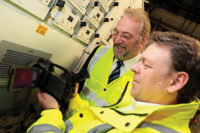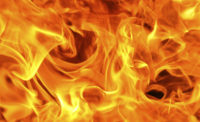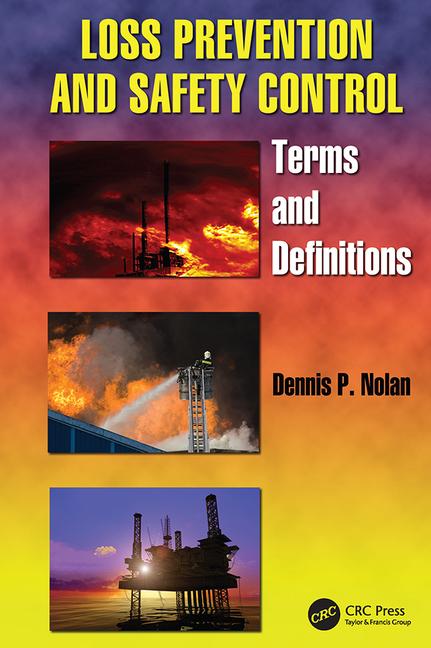|
Jump to: |
A crucial electrical safety element is ensuring that equipment is safe before any work commences. NFPA 70E provides best practices for electrical safety and these recommendations are used by governmental enforcement agencies (such as OSHA), municipal building inspectors and even insurance companies as the basis for mandates placed on corporations and individuals globally.
Value of NFPA
NFPA is the global advocate of fire prevention. The influence of its 300 codes and standards are evident in buildings, products and practices throughout the world. NFPA 70, also known as National Electric Code (NEC), is the standard for electrical design, installation and inspection. It does not specifically address electrical maintenance or safe work practices. For the consensus standards on these topics we turn to NFPA 70B and NFPA 70E.
NFPA 70B
NFPA 70B is a standard for implementing an effective Electrical Preventive Maintenance (EPM) program designed to reduce hazards to life and property resulting from the failure or malfunction of electrical systems and equipment. A well-administered EPM program reduces accidents, save lives and minimizes costly breakdowns and unplanned shutdowns of equipment. Without an EPM program, management assumes an increased risk of serious electrical failure and its consequences.
70B outlines the benefits of an EPM program:
- Asset protection: Equipment lasts longer and performs better.
- Risk management: Protect against accidents, lost production and loss of profit.
- Energy conservation: Maintained equipment operates more efficiently and utilizes less energy.
- Uptime and profitability increased: Reduced interruption of production, better workmanship and increased productivity.
- Improved employee morale and reduced absenteeism
- Insurance costs reduction: Due to the alternative high cost of inadequate maintenance.
NFPA regards systematic and regular thermographic or infrared (IR) electrical inspections to be a critical component of an EPM program proclaiming these inspections have uncovered a multitude of potentially dangerous situations. Proper diagnosis and resolution of these situations have prevented numerous losses.
70B is also specific about performing inspections while equipment is operating, stating IR surveys should be performed during periods of maximum possible loading but not less than 40 percent of rated load of the electrical equipment being inspected. Where IR windows are not available, equipment should be opened for inspection. Opening electrical panels to perform thermographic inspections per NFPA 70B guidelines and insurance requirements increases the risk of arc flash triggers.
NFPA 70E
The NFPA 70E Standard is intended for use by employers, employees and OSHA to set standards for evaluating electrical safety in the workplace.
Basic compliance with the 2012 edition of NFPA 70E is established with a five-step process, which includes an arc flash analysis.
1. Develop and audit on a regularly scheduled basis an electrical safe work practice policy.
2. Conduct an electrical system study to determine the present degree of arc flash hazards and apply associated equipment labeling.
3. Ensure adequate supplies of personal protective equipment (PPE) and proper tools for electrical workers.
4. Conduct regularly scheduled safety training and audits for all electrical workers.
5. Maintain all electrical distribution system equipment and components per manufacturers’ recommendations.
Hierarchy of control
At the heart of NFPA 70E and OSHA initiatives is the hierarchy of control. This attempts to mitigate risk wherever possible. In order of preference, the hierarchy of control prioritizes:
1. Risk Elimination
2. Substitution (with lower risk)
3. Engineering Controls (such as arc-resistant switchgear)
4. Safe Work Practices
5. PPE
The best way to reduce risk is to eliminate it. This is why NFPA 70E and OSHA state that electrical equipment should be de-energized prior to opening.
OSHA
Although OSHA has not adopted and does not mandate NFPA 70E compliance, you can be cited for non-compliance. Remember that OSHA's authority stems from the Occupational Safety and Health Act, in particular Section 5(a)(1) and 29 CFR 1910.2(g).
Section 5(a)(1) “General Duty Clause” states that employers “shall furnish to each of his employees employment and a place of employment which are free from recognized hazards that are causing or are likely to cause death or serious physical harm to his employees.” This is the clause most cited by OSHA where unsafe work conditions are found to exist.
Section 29 CFR 1910.2(g) “National Consensus Standard” means any standard or modification which has been adopted and promulgated by a nationally recognized standards-producing organization under procedures whereby it can be determined that persons interested and affected by the scope or provisions of the standard have reached substantial agreement on its adoption.” NFPA 70E is a national consensus standard and, as such, non-compliance leaves employers open for citation under this clause.






